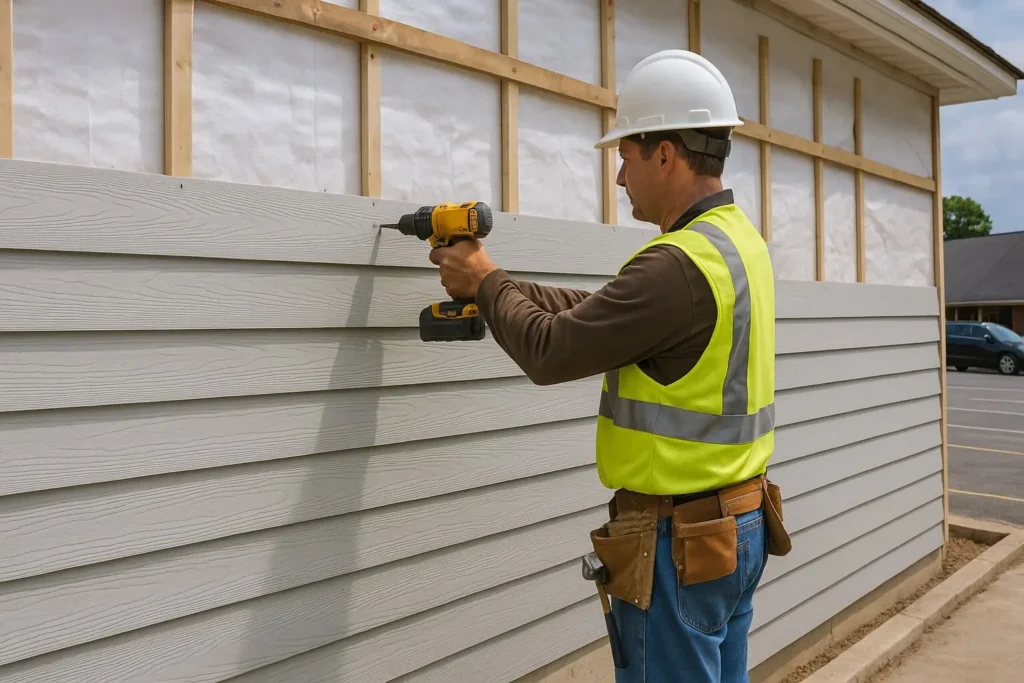Hardie Plank Siding Cost


Hardie Plank Siding Cost is something that many homeowners want to understand before starting a project. Hardie Plank is a fiber cement siding known for strength, long life, and a classic wood look. People select it because it stands up to fire, pests, and tough weather better than many other materials. Knowing the cost ahead of time helps you set a real budget, compare options, and avoid surprises once work begins. It also helps you talk with contractors using clear numbers and a shared plan.
The price you pay depends on several things, including the size of your home, the style you select, and labor rates where you live. The material is not the cheapest, but it often delivers better value over time because it protects the house for decades with less repair. When you add in fewer fixes and steady curb appeal, the total cost of ownership can be lower than it first appears.
What Makes Up the Hardie Plank Siding Cost
Hardie Plank Siding Cost usually combines materials and labor. The boards are sold by the square foot, and most homes need hundreds of square feet to cover exterior walls. Material alone often ranges from two to five dollars per square foot. Once you add installation, the total rises, because proper siding work takes skill, tools, and time. Crews need ladders, brakes for bending metal trim, safe staging, and careful weather planning.
Other items can also affect the final bill. Hardie offers smooth boards, wood grain textures, and profiles that mimic traditional styles. Premium colors and special finishes may add cost. You can also see delivery fees, trim and corner pieces, house wrap, flashing, caulk, and insulation. If the job needs new soffits or fascia, that adds more line items. When you understand every part of the price, you can plan better and avoid paying for extras you did not expect.
Average Price Range for Hardie Plank Siding
When looking at Hardie Plank Siding Cost, it helps to see the full job range. For an average sized home, total cost often falls between ten thousand and twenty thousand dollars. Smaller homes can be less, however large houses or complex designs cost more. This range includes materials and professional installation. Ask each contractor what is included so you know the number covers tear off, disposal, trim, and paint.
While the number may be higher than vinyl, think about long term value. Hardie Plank can last for decades and resists warping, rot, and insects. Many owners treat it as an investment because it reduces repairs, keeps curb appeal high, and can even lift home value. You may pay more up front, but you often save over the life of the siding. A strong warranty and a proven brand also bring peace of mind.
Factors That Affect Hardie Plank Siding Cost
Some factors change Hardie Plank Siding Cost. Home size is the first one. Bigger homes need more boards and more labor hours. Style also matters. Simple lap siding is usually cheaper than special patterns that need extra cuts and careful fitting. Corners, trim details, and decorative bands add time, which adds cost.
Labor rates vary by area. If construction labor is expensive where you live, installation will cost more. Access plays a role too. Two story homes, steep grades, tight lot lines, or many angles can slow the crew and add to the price. Removing old siding adds labor and disposal fees, however installing over sound sheathing can save time when allowed by code. Weather can also affect cost if rain or wind causes delays.
Comparing Hardie Plank to Other Siding Options
Compared with other choices, Hardie often costs more than vinyl but less than brick or stone. Vinyl is usually the lowest price and installs quickly, but it can fade, crack, or warp over time. Brick and stone last a very long time, yet they can cost two to three times more than Hardie. Fiber cement sits in the middle, offering durability without the very high price of masonry. Many owners feel it delivers a good balance of strength, look, and price.
Hardie also looks closer to real wood than many vinyl products. You can select from a wide range of colors and textures to match your style. When you compare options, look at both the upfront price and the long term value, including maintenance, repainting cycles, and expected life. Think about climate, sun exposure, and the look you want on your block.
Real Experiences of Homeowners Using Hardie Plank
Homeowners who install Hardie Plank often report strong results. Many say their homes look sharper and feel better protected from storms and pests. Some note that even the initial price was higher than vinyl, but they saved money later by avoiding frequent repairs or replacements. The siding tends to hold its shape and color for years when maintained as recommended. It takes paint well, so color refreshes last longer too.
A few owners point out that the first cost stretched their budget and that skilled installation was essential. Even so, most feel the project was a good investment because the siding increased curb appeal, added confidence during bad weather, and supported resale value. They also like the solid feel when tapping the boards and the quiet performance in strong wind.
Tips to Save Money on Hardie Plank Installation
Get at least three written quotes from licensed contractors. Prices and scopes vary, and multiple bids help you compare fairly. Ask about scheduling in slower seasons when crews may give better rates. Request a line item proposal that separates materials, labor, and extras, so you can see where savings are possible.
Keep designs simple to cut labor time. Standard lap profiles and common colors usually cost less than custom looks. If your existing exterior is sound and code allows, you may reduce costs by avoiding full tear off. After installation, follow basic care like gentle washing and timely repainting.
Read more: The best Quantity Takeoff Software.
The Future of Hardie Plank Siding
Siding is changing with new tech and greener goals, and Hardie is part of that trend. Expect ongoing improvements in coatings that resist fading, along with colors that stay bright longer. Manufacturers are also exploring more eco friendly processes and materials while keeping the same strength and safety. Better recycling programs and cleaner plants are likely to grow over time.

